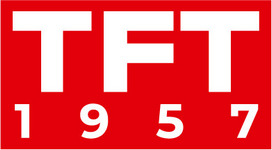- Telestream Wirecast Gear 3: the live production solution
- Dejero: the technology partnership with Taoglas
- TAGVS MCS: the NAB Show Product of the Year Awards.
360 seconds. News & Commentary — Weekly program. The main news for broadcasters.
Hosts
Philip Grossman, Film and Television Industry Veteran and Technology Consultant, Mary Ann Seidler, First Light Broadcast.
Presenter
Maria Kholodova, TKT1957.
- Telestream Wirecast Gear 3: the live production solution
Telestream Wirecast Gear 3 is a turnkey solution for producing and streaming live video content, in a single package. It supports up to 4K60 streaming workflows and includes NDI input and outputs.
Dejero is partnering with Taoglas, a provider of antenna and RF technologies, to help its customers select best-in-class antennas for its cellular bonding devices.
- TAGVS MCS: the NAB Show Product of the Year Awards
TAG’s MCS has received the NAB Show Product of the Year Award. It is the newest layer of the Realtime Media Performance Platform, that monitors, aggregates, manages and utilizes data-driven viewer analytics.
The live broadcast took place on May 16, 2022. Production — TKT1957 LLC.
360 Seconds News and Commentary for Broadcast Professionals with experts Philip Grossman and Mary Ann Seidler
Maria Kholodova: Telestream Wirecast Gear 3 is a turnkey solution for producing and streaming live video content in a single package. It supports up to 4K 60 streaming workflows and includes NDI inputs and outputs. Philip, what do you think the prospects of this are?
Philip Grossman: It’s interesting because it puts everything together in a single package making it much easier. We’ve seen over the last few years that effectively, everybody can become a streamer or television producer: whether everybody should is a different question, but clearly, everybody can. I’ve used the Wirecast product in the past and I found that packaging the technologies together and simplifying the solutions, makes it simple for the end customer.
Mary Ann Seidler: Philip, I have come to notice that in houses of worship or smaller video facilities, for instance, they have had to seclude together solutions and this seems to me to be in the right price range and looks like it is easy to use. So could someone who is not technologically inclined go ahead and operate an entire show with this?
Philip Grossman: I think so. One of the hardest parts of streaming is video input. Video output is actually fairly easy. Video input is the most difficult and of course, some solutions allow one or two inputs at a time which packages it all together to give you the ability to do the NDI, SDI, or HDMI for up to four channels or more so it simplifies the whole setup. Though I think you still need to have a little technical knowledge to run it -it is a computer after all -but you don’t have to be a broadcast engineer which is really simplifying the point at which the entry-level person can obtain the system and be able to utilize it, so houses of worship are perfect.
Maria Kholodova: Now moving on to Dejero. Dejero is partnering with Taoglas, a provider of antennas and RF technologies to help its customers select the best in-class antennas for its cellular bonding services. Mary, what do you think this means for the industry?
Mary Ann Seidler: This is exciting. Taoglas started in 2005 and they are so laser-focused on antenna technology and again, you are seeing something where in the past people have had to huge together solutions and now, Dejero can offer a kind of an all-in-one solution. Philip, have you run into Taoglas or Dejero much?
Philip Grossman: I’ve run into Dejero and Taoglas a little bit. If I remember physics correctly, in antenna designs, there were a lot of imaginary numbers and all other kinds of things. It’s a science for sure and if you don’t get it right, your signal will suffer. I know that in my drone work, switching to long-range narrow plate antennas, you can go a long distance but if you turn three degrees left or right, you lose signal. I think this is simplifying that process for bonded cellular customers which is becoming the go-to technology over satellite or microwave trucks because it’s a lot less expensive. I imagine that it’s just going to take the unknown that a lot of these providers deal with and take them to the next level to provide them with a much better signal ratio or signal capability for that bonded cellular.
Maria Kholodova: Moving on to TagVS. TagVs MCS has received the NAB show product of the year award. It’s the newest layer of real-time media performance award that monitors, aggregates, manages, and utilizes data-driven viewer analytics. How do you think this can help broadcasters evolve?
Philip Grossman: Well, I know Tag has been focused on the analysis aspect with their multi-viewers and signal stream and going into an Ip world where most of our users are used to the old SDI world of being able to patch things through, this gives them a virtual way of patching. This in turn increases the capabilities of being able to monitor those signals and ensure that the unknown of Ip becomes a known distribution model for them. I think it’s going to help them a lot.
Maria Kholodova: Mary, what do you think?









